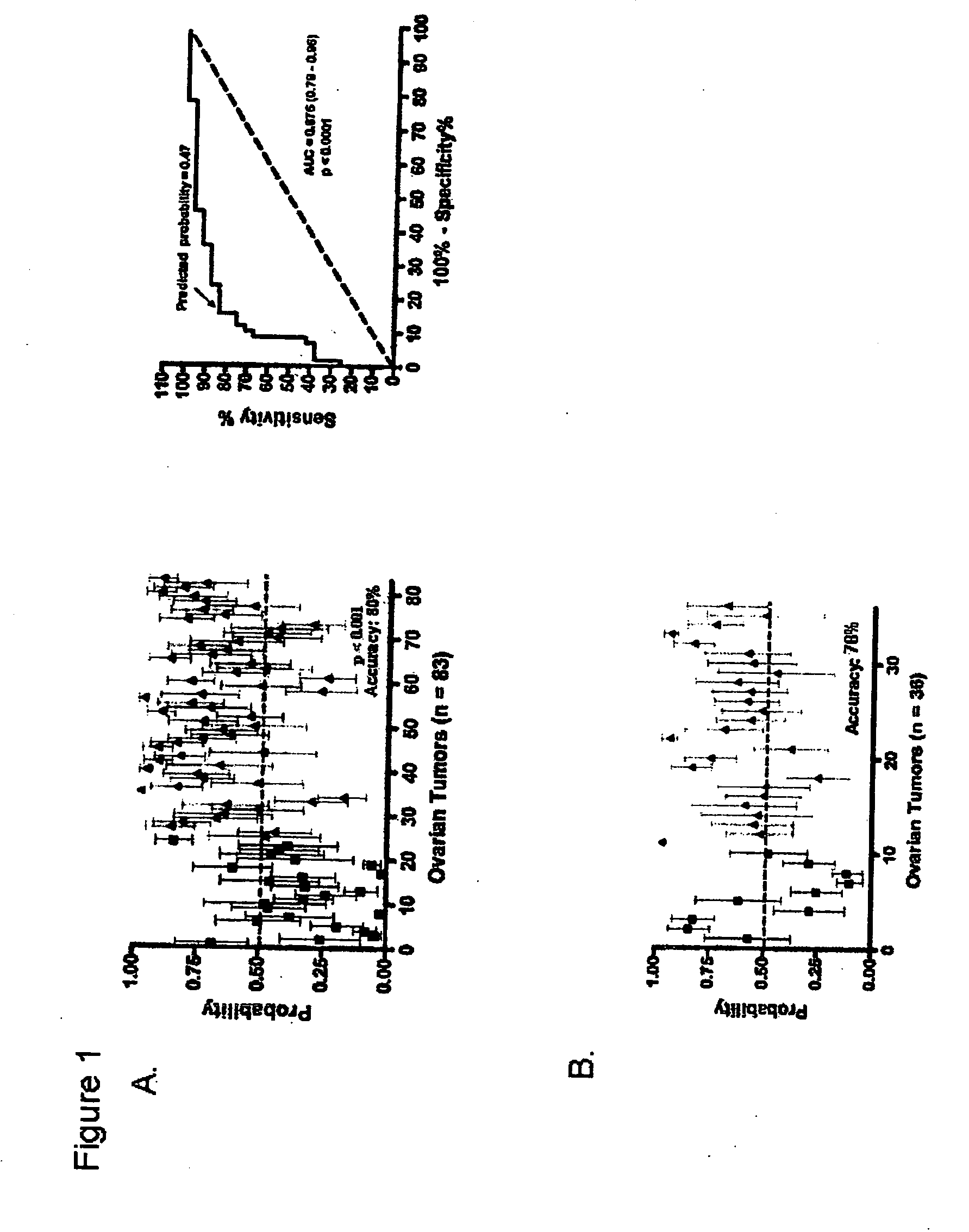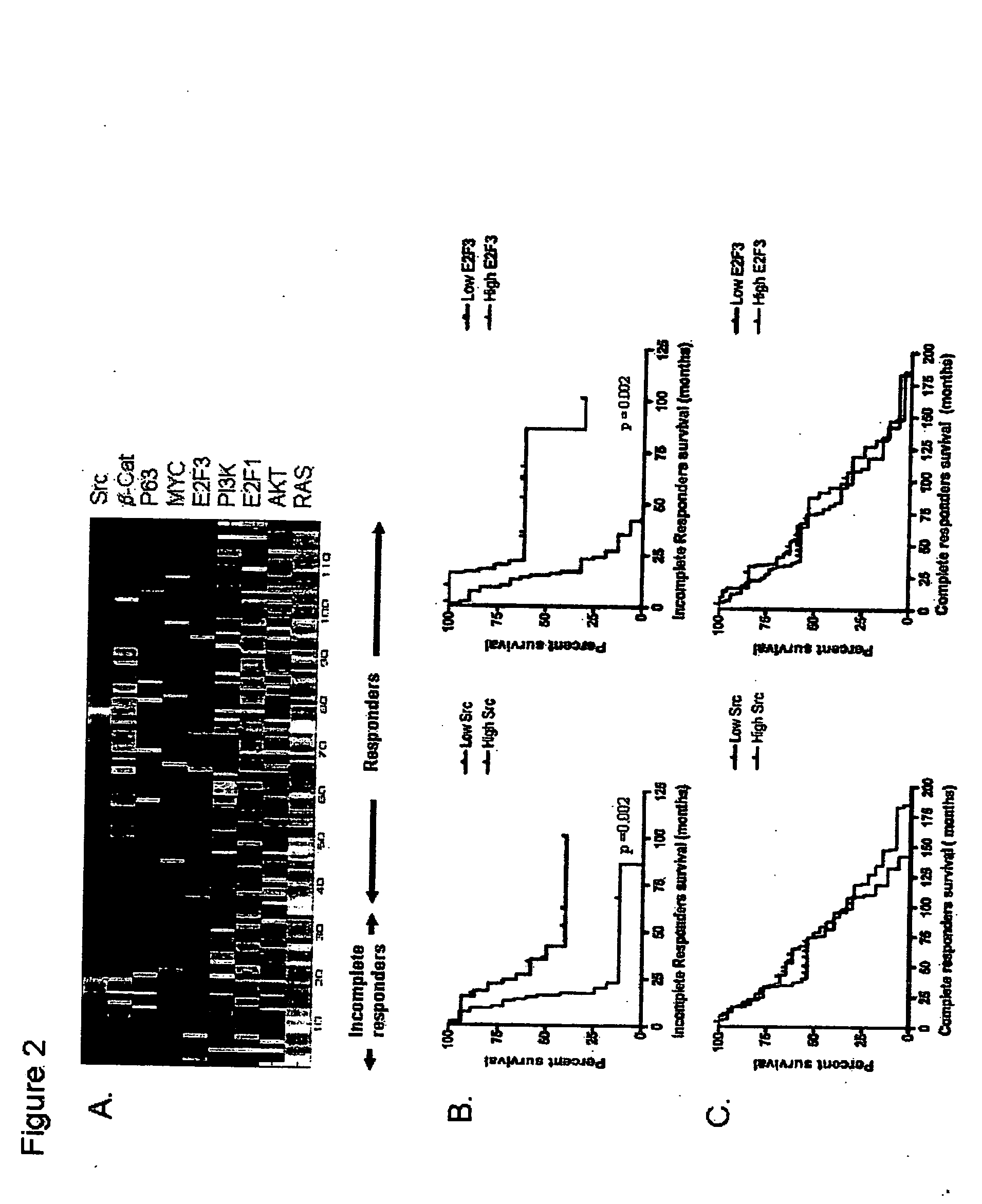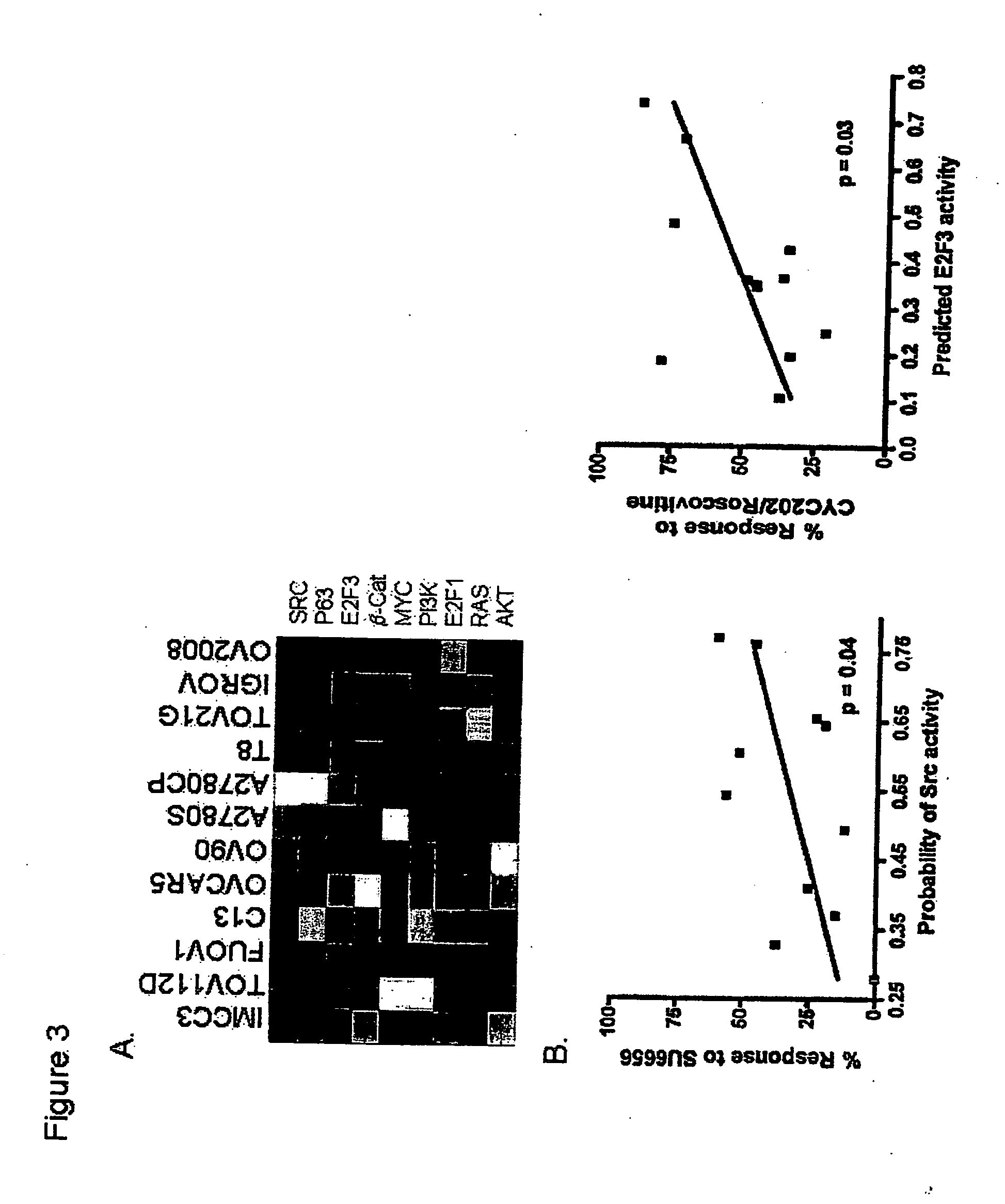Individualized cancer treatments
a cancer treatment and gene expression technology, applied in the field of gene expression profiling, can solve the problems of lack of efficacy, inability to predict the response to specific therapies, and many patients with chemo-resistant disease receiving multiple cycles of toxic therapy without success, so as to increase the probability of clinical response
- Summary
- Abstract
- Description
- Claims
- Application Information
AI Technical Summary
Benefits of technology
Problems solved by technology
Method used
Image
Examples
example 1
Use of Platinum Chemotherapy Responsivity Predictor Set and Salvage Therapy Resonsivitiy Predictor Set
[0193] The purpose of this study was to develop an integrated genomic-based approach to personalized treatment of patients with advanced-stage ovarian cancer. The inventors have utilized gene expression profiles to identify patients likely to be resistant to primary platinum-based chemotherapy and also to identify alternate targeted therapeutic options for patients with de-novo platinum resistant disease.
Material and Methods
[0194] Patients and tissue samples—Clinicopathologic characteristics of 119 ovarian cancer samples included in this study are detailed in Table 1. All ovarian cancers were obtained at initial cytoreductive surgery from patients treated at Duke University Medical Center and H. Lee Moffitt Cancer Center & Research Institute, who then received platinum-based primary chemotherapy. The samples were divided (70 / 30 ratio) into training and validation sets. As a resu...
example 2
Development and Characterization of Gene Expression Profiles that Determine Response to Topotecan Chemotherapy for Ovarian Cancer
Material and Methods
[0216] MIAME (minimal information about a microarray experiment)-compliant information regarding the analyses performed here, as defined in the guidelines established by MGED (www.mged.org), is detailed in the following sections.
[0217] Tissues—We measured expression of 22,283 genes in 12 ovarian cancer cell lines and 48 advanced (FIGO stage III / IV) serous epithelial ovarian carcinomas using Affymetrix U1 33A GeneChips. All ovarian cancers were obtained at initial cytoreductive surgery from patients treated at H. Lee Moffitt Cancer Center & Research Institute or Duke University Medical Center. All patients received primary platinum-based adjuvant chemotherapy and went on to demonstrate persistent or recurrent disease. All tissues were collected under the auspices of a respective institutional IRB approved protocol with written inform...
example 3
Gene Expression Profiles that Direct Salvage Therapy for Ovarian Cancer
Material and Methods
[0233] Topotecan-response predictor—To develop a gene expression based predictor of sensitivity / resistance from the pharmacologic data used in the NCI-60 drug screen studies, we chose cell lines within the NCI-60 panel that would represent the extremes of sensitivity to topotecan. The (21 og10) G150, TGI and LC50 data was used to populate a matrix with MATLAB software, with the relevant expression data for the individual cell lines. Where multiple entries for topotecan existed (by NCS number), the entry with the largest number of replicates was included. Incomplete data were assigned asNaN (not a number) for statistical purposes. Since the TGI and LC50 dose represent the cytostatic and cytotoxic levels of any given drug, cell lines with low LC50 and TGI were considered sensitive and those with the highest TGI and LC50 were considered resistant. The log transformed TGI and LC50 doses of the ...
PUM
| Property | Measurement | Unit |
|---|---|---|
| time | aaaaa | aaaaa |
| time | aaaaa | aaaaa |
| responsivity | aaaaa | aaaaa |
Abstract
Description
Claims
Application Information
 Login to View More
Login to View More - R&D
- Intellectual Property
- Life Sciences
- Materials
- Tech Scout
- Unparalleled Data Quality
- Higher Quality Content
- 60% Fewer Hallucinations
Browse by: Latest US Patents, China's latest patents, Technical Efficacy Thesaurus, Application Domain, Technology Topic, Popular Technical Reports.
© 2025 PatSnap. All rights reserved.Legal|Privacy policy|Modern Slavery Act Transparency Statement|Sitemap|About US| Contact US: help@patsnap.com



